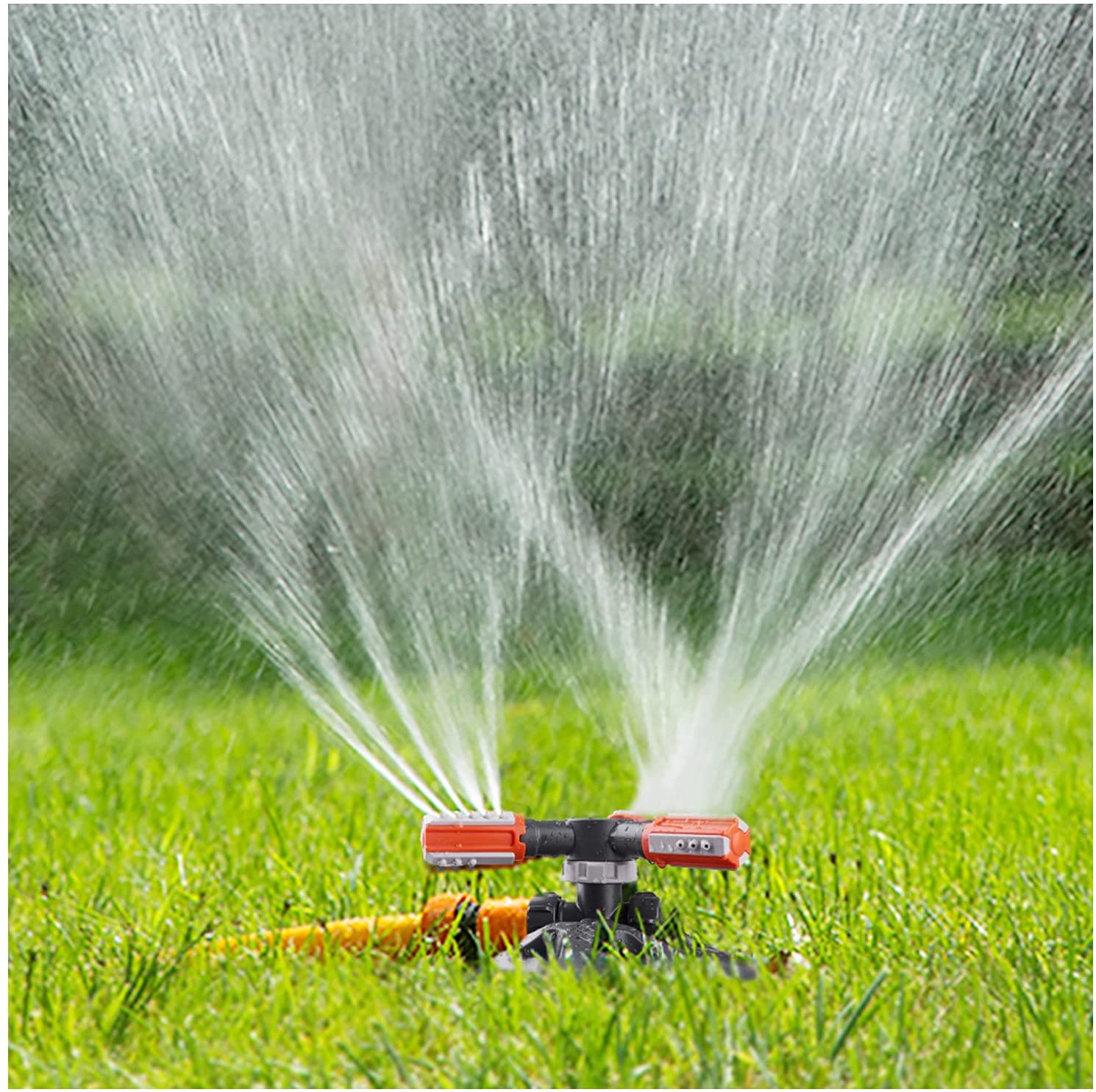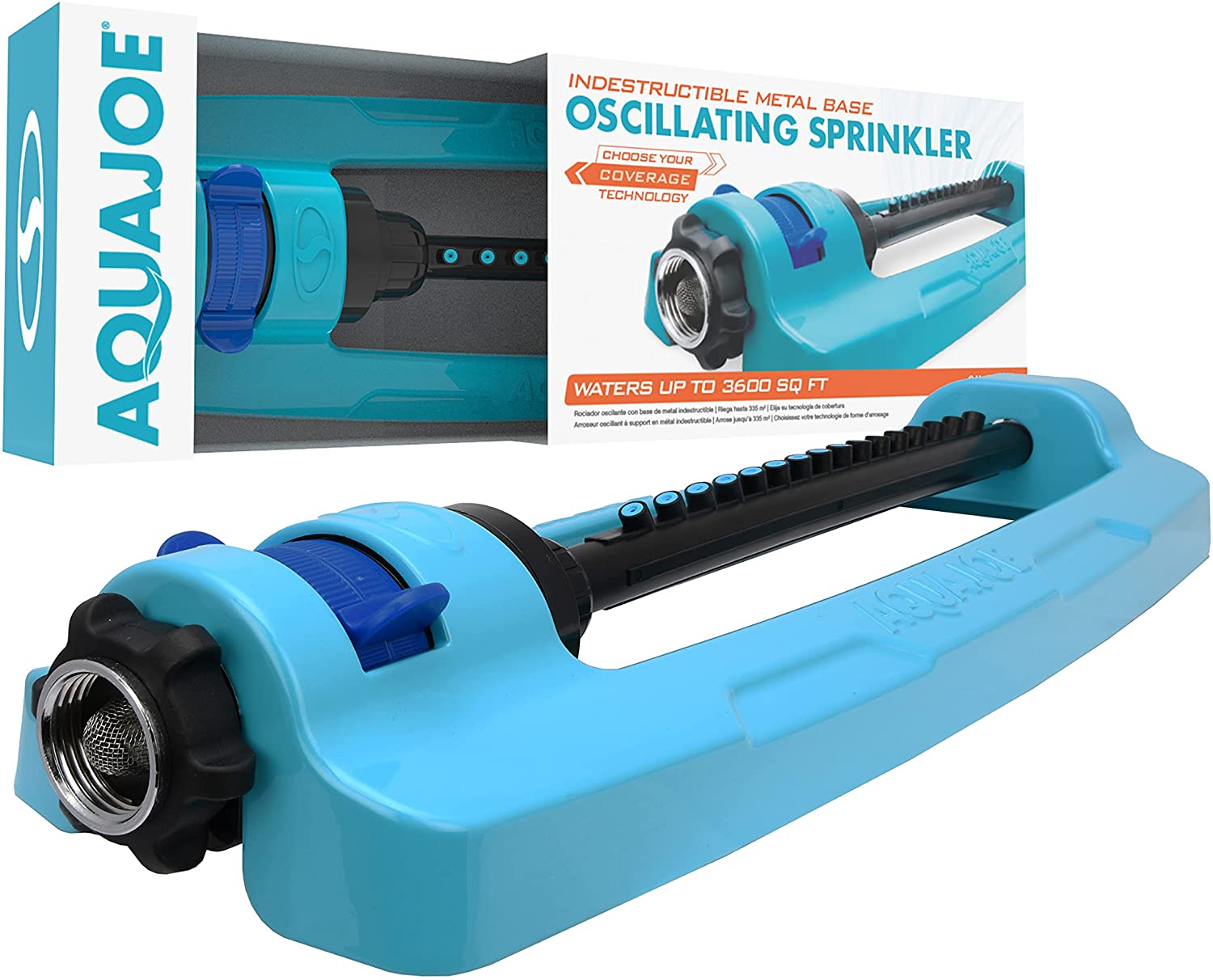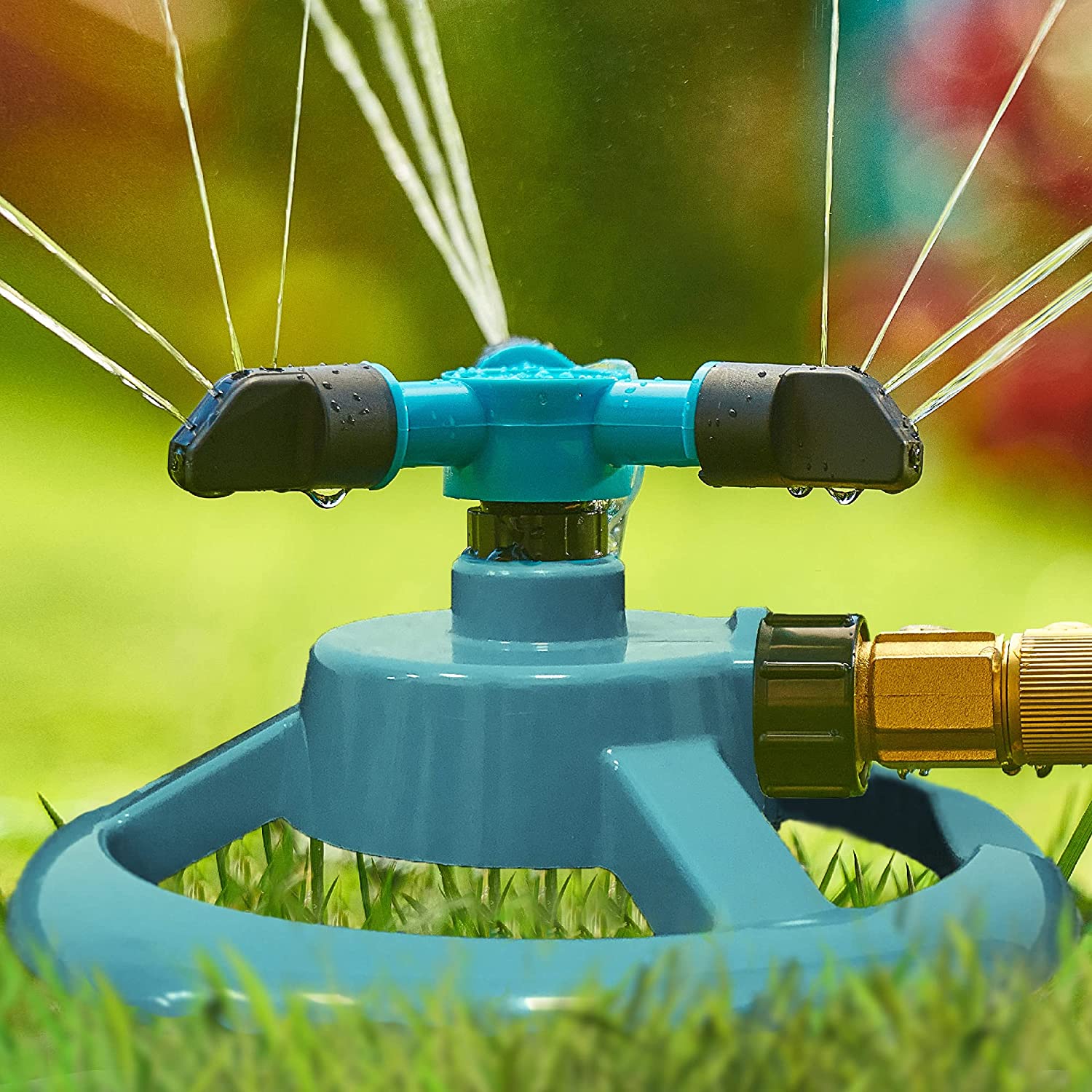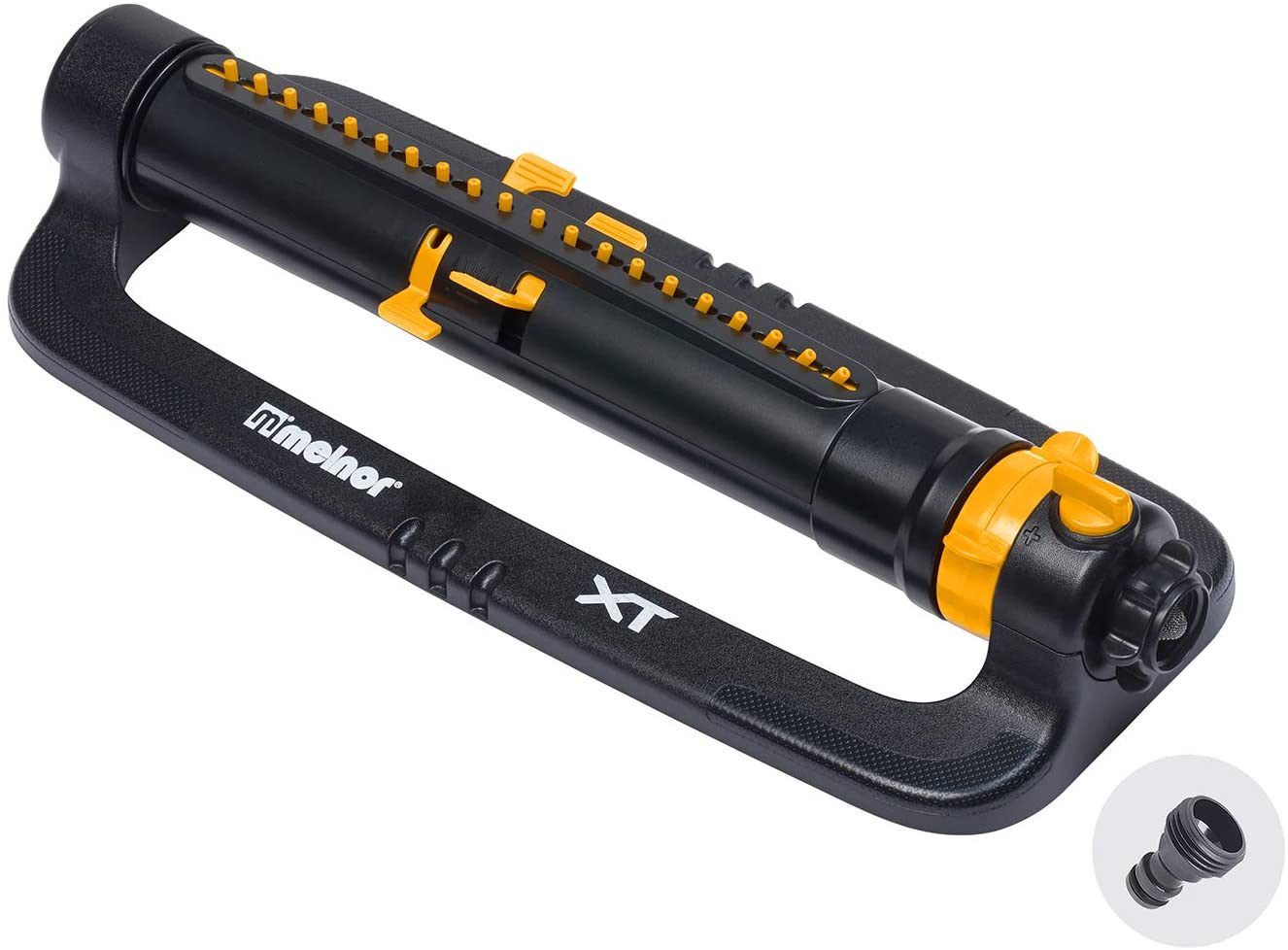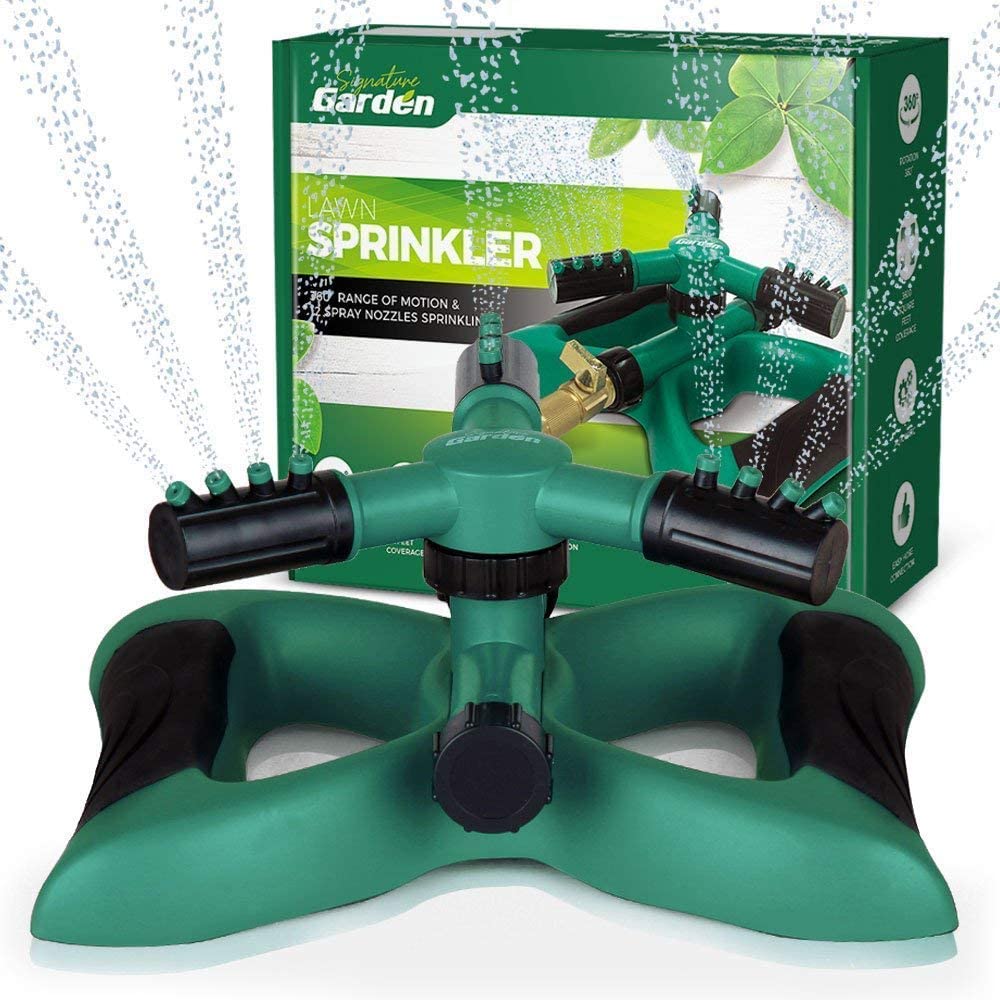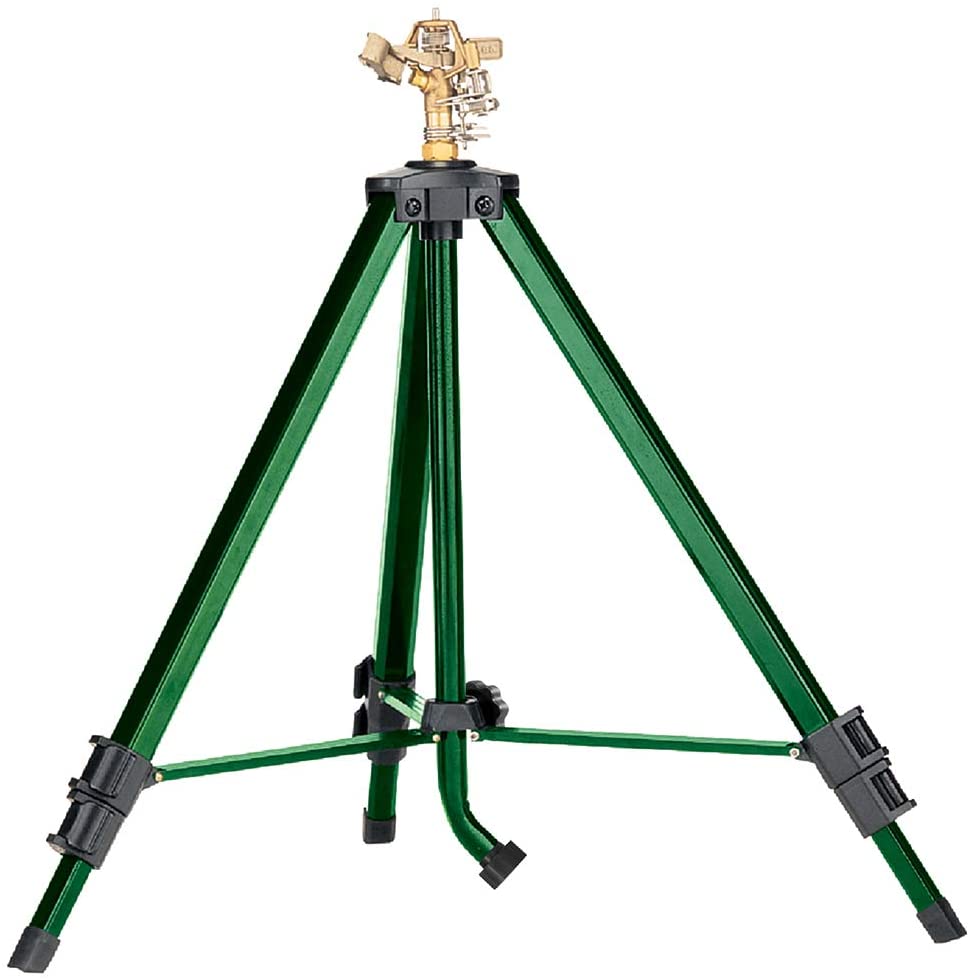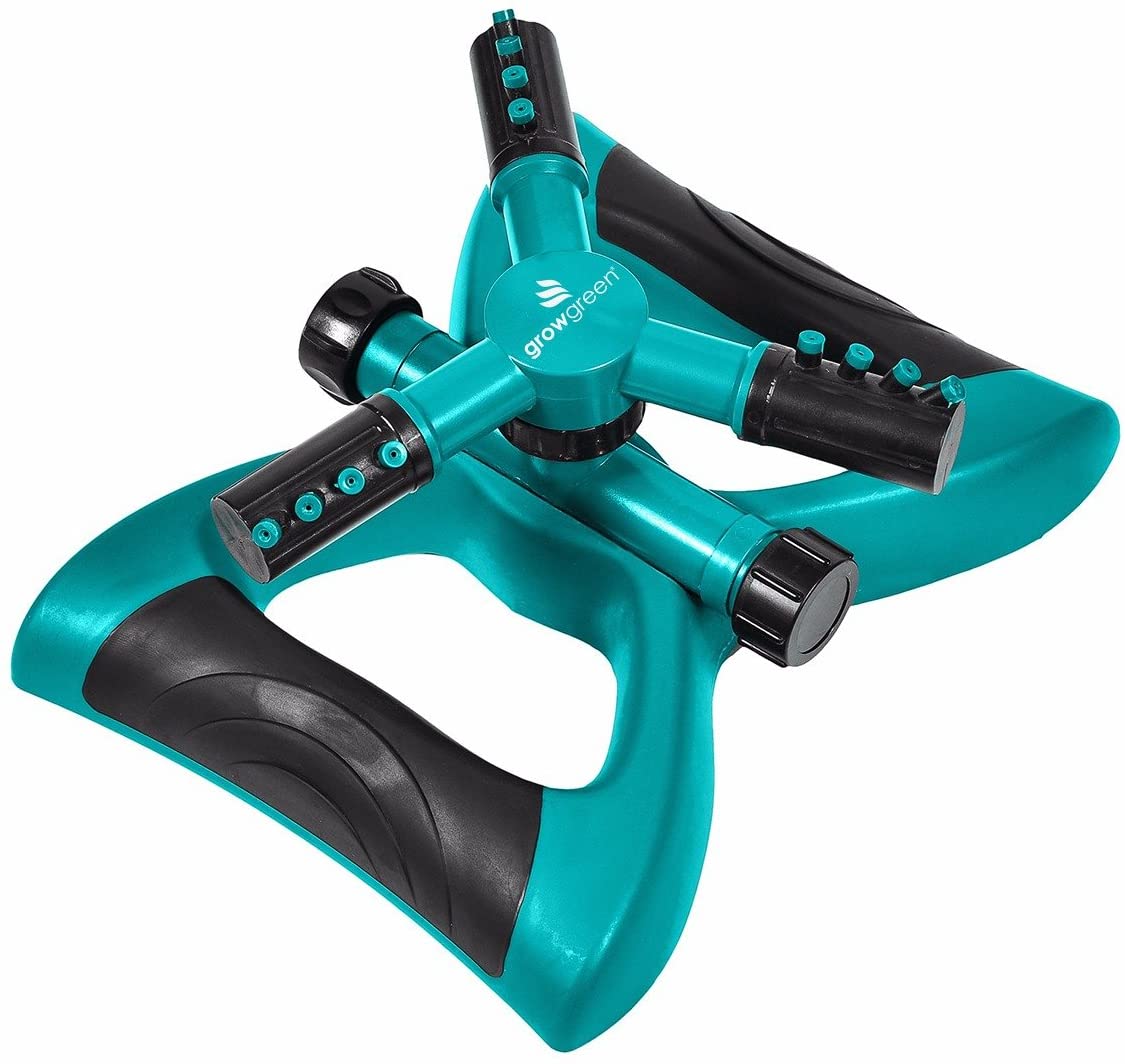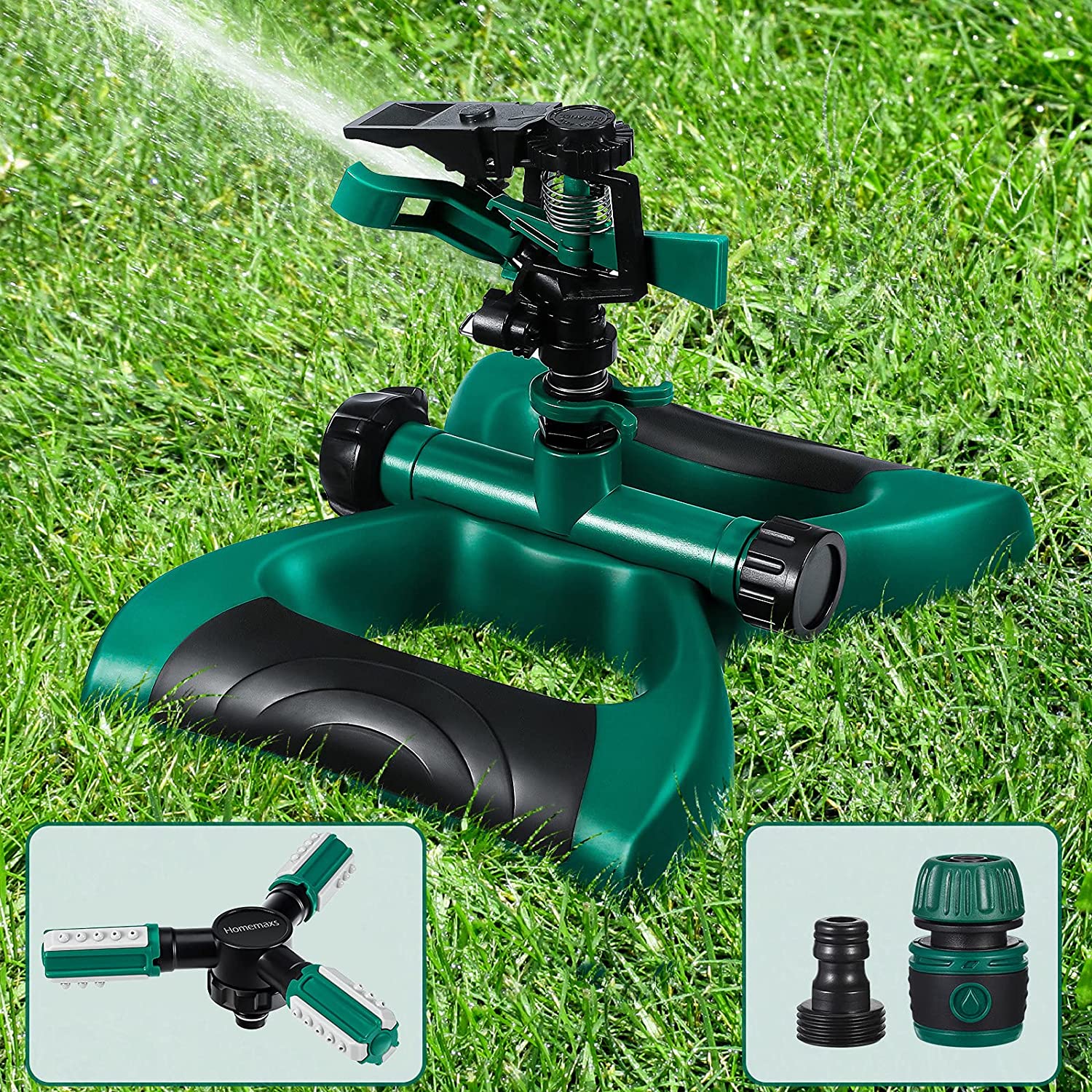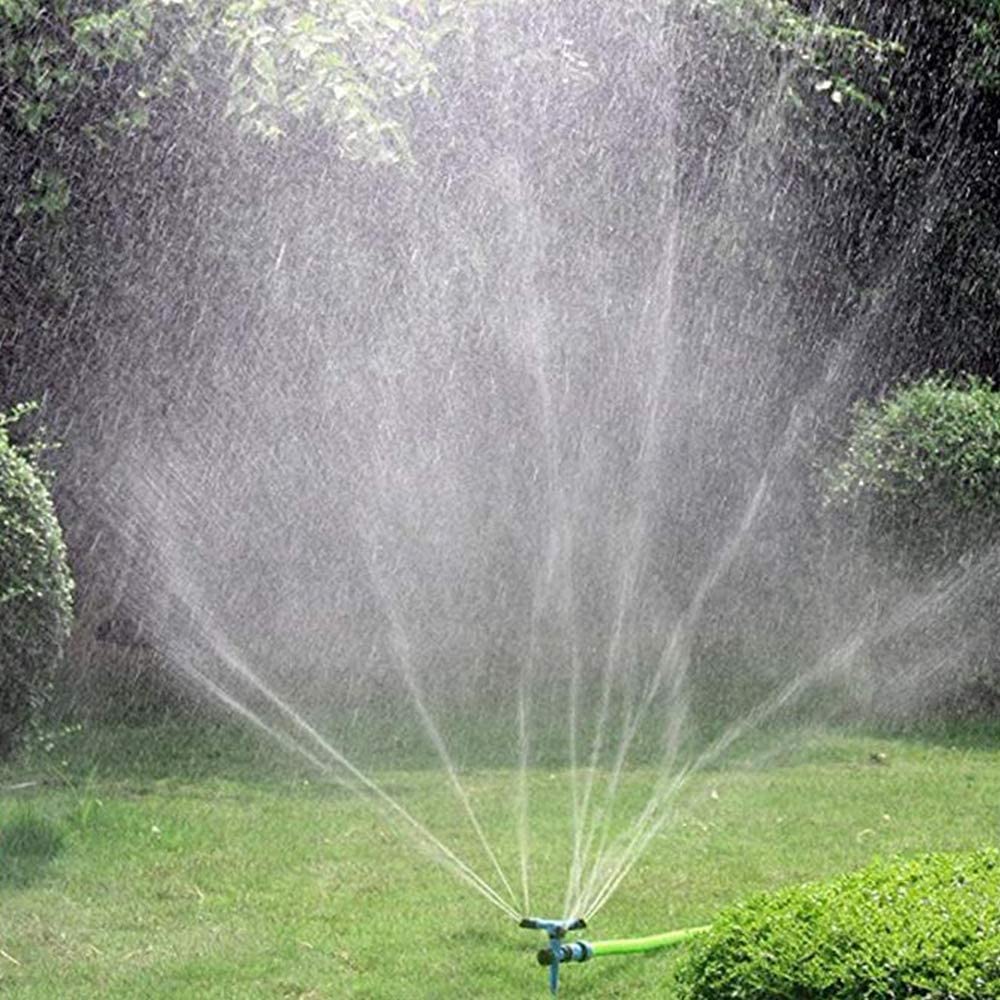WOVUU 360 Rotation Garden & Lawn Sprinkler
Last updated: August 16, 2021
With 36 spray nozzles on three rotating arms, you'll get a spray range of between 32.8 feet and 49.2 feet. This hose is designed to connect to two or more other sprinklers to give you even more coverage. It allows for water pressure of up to 60 psi.
We looked at the top Lawn Sprinklers and dug through the reviews from some of the most popular review sites. Through this analysis, we've determined the best Lawn Sprinkler you should buy.
Product Details
Key Takeaway: This sprinkler is designed to connect to other sprinklers to extend your coverage.
In our analysis of 56 expert reviews, the WOVUU 360 Rotation Garden & Lawn Sprinkler placed 6th when we looked at the top 9 products in the category. For the full ranking, see below.From The Manufacturer
WOVUU Lawn sprinkler built in 3 adjustable rotating arms sprayer,each arm comes with 3 kinds spray and total 36 UNITS different angle spray nozzles, the grass sprinkler is increased 24 units than old version. The garden sprinkler is a more powerful irrigation to provide better watering effect for your yard.
